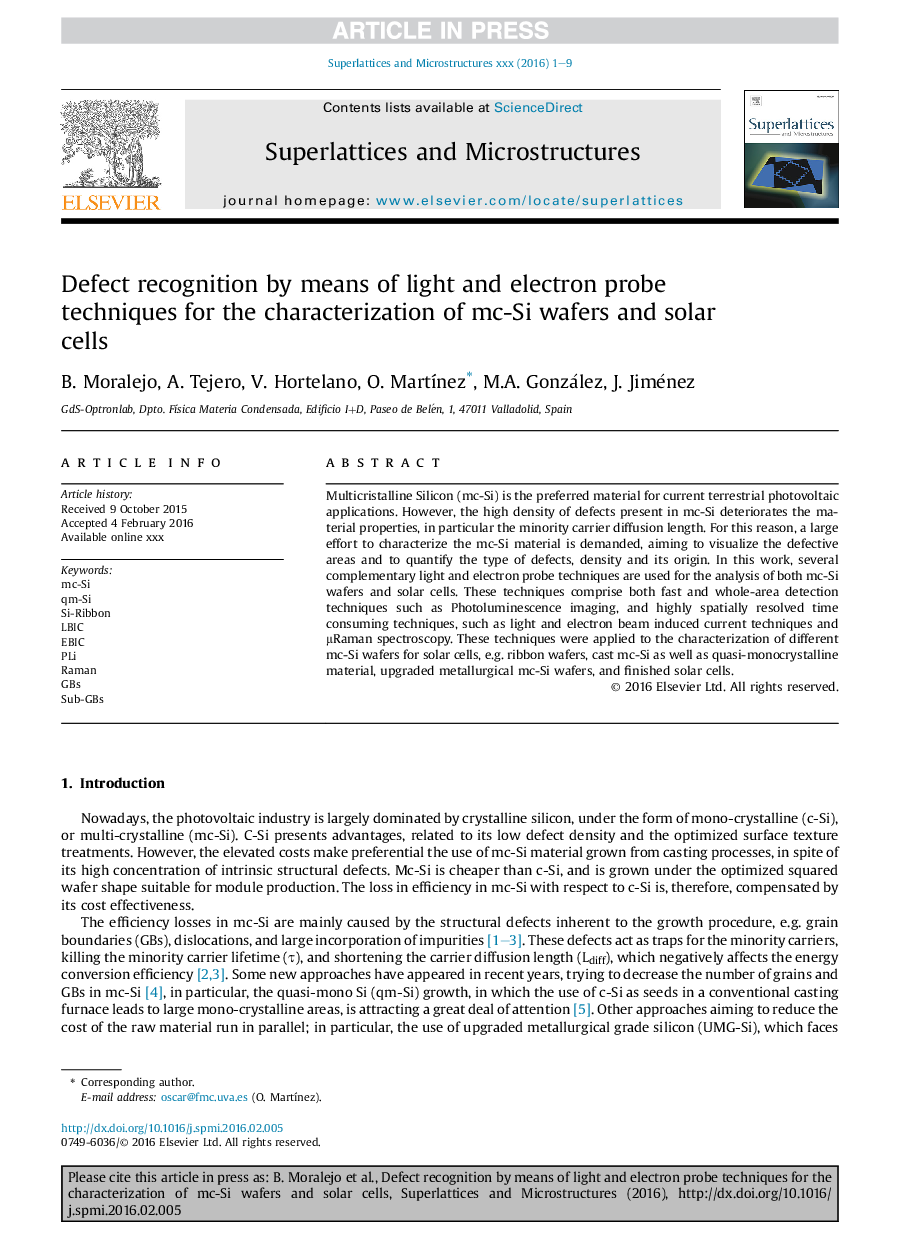| Article ID | Journal | Published Year | Pages | File Type |
|---|---|---|---|---|
| 7941841 | Superlattices and Microstructures | 2016 | 9 Pages |
Abstract
Multicristalline Silicon (mc-Si) is the preferred material for current terrestrial photovoltaic applications. However, the high density of defects present in mc-Si deteriorates the material properties, in particular the minority carrier diffusion length. For this reason, a large effort to characterize the mc-Si material is demanded, aiming to visualize the defective areas and to quantify the type of defects, density and its origin. In this work, several complementary light and electron probe techniques are used for the analysis of both mc-Si wafers and solar cells. These techniques comprise both fast and whole-area detection techniques such as Photoluminescence imaging, and highly spatially resolved time consuming techniques, such as light and electron beam induced current techniques and μRaman spectroscopy. These techniques were applied to the characterization of different mc-Si wafers for solar cells, e.g. ribbon wafers, cast mc-Si as well as quasi-monocrystalline material, upgraded metallurgical mc-Si wafers, and finished solar cells.
Related Topics
Physical Sciences and Engineering
Materials Science
Electronic, Optical and Magnetic Materials
Authors
B. Moralejo, A. Tejero, V. Hortelano, O. MartÃnez, M.A. González, J. Jiménez,
